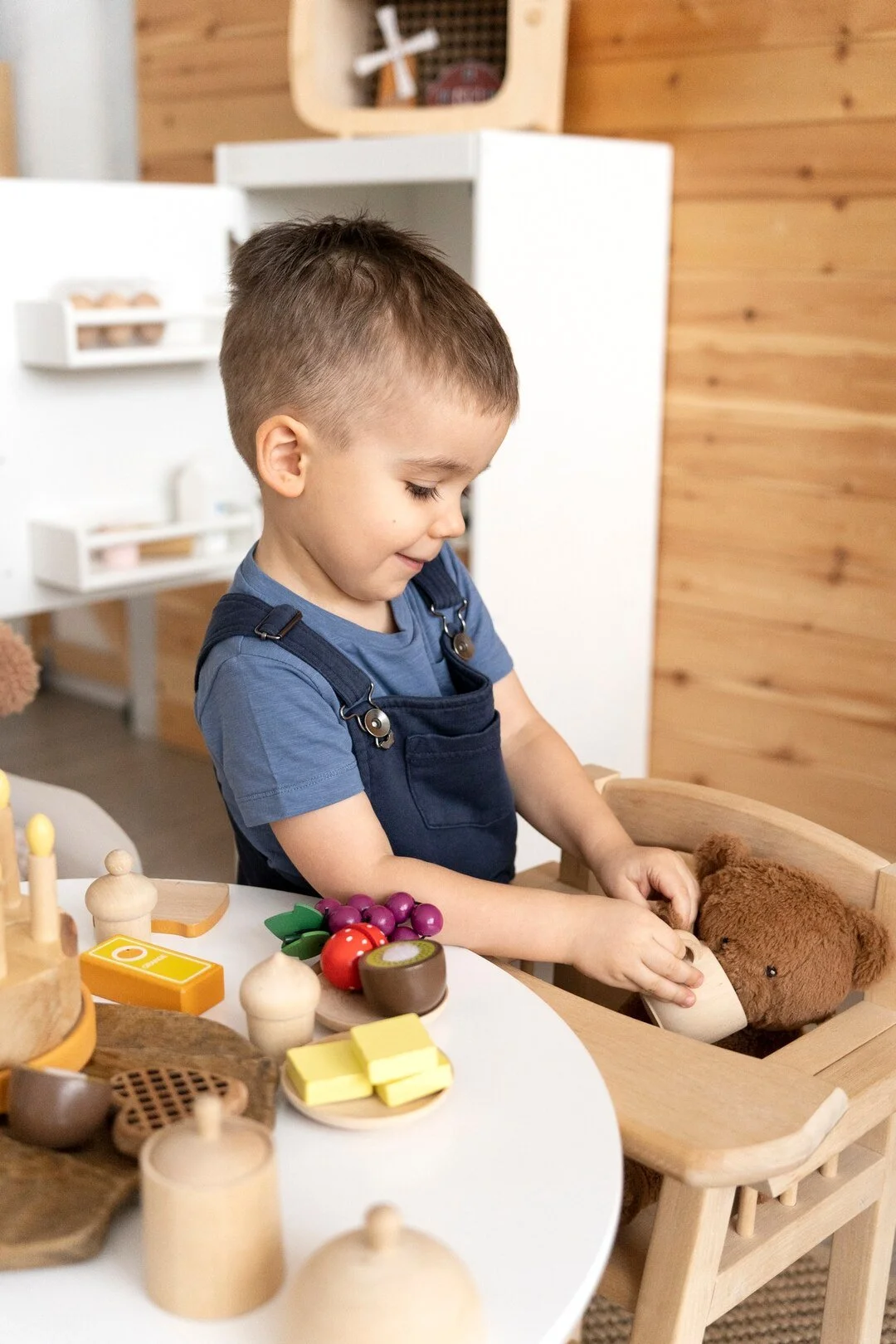ten fun alternatives to screen time
We all know screen time can be a lifesaver, whether you’re trying to make a call, take a shower or just catch a breath. And let’s be honest, there’s no shame in that. But if you’re looking for ways to mix things up and keep your toddler engaged without a screen, this list is for you. Here are ten simple, fun activities that offer enriching alternatives to screen time while keeping your little one happily occupied.
Sensory Play: Sensory play with play dough, bins of kinetic sand, rice, or beans provides rich sensory input, which helps regulate the nervous system and can be calming. Manipulating items, like scoopers and cups, develops fine motor skills essential for everyday tasks like writing. Digging and finding hidden toys can engage children in focus and problem-solving, supporting cognitive development.
Pretend Play: Pretend play allows children to explore roles, scenarios, and emotions in a safe, imaginative space. Activities like using a doctor’s kit or play kitchen encourage social skills, as children “practice” communicating and interacting. Pretend play also supports emotional expression by allowing children to work through feelings, which is essential for emotional regulation and empathy.
Building with Blocks or Legos: The act of stacking and balancing requires patience, coordination, and problem-solving, while creativity in constructing unique designs nurtures innovation and confidence.
Sorting and Matching Games: Sorting colored items or matching shapes encourages logical thinking, categorization, and focus. These activities strengthen cognitive skills by teaching children to recognize patterns and relationships, essential for math and language skills. Sorting also provides a sense of order, which can help children feel more in control and grounded.
Music and Dance: Dancing and playing with instruments like shakers and drums provide physical activity, which is essential for energy regulation and physical health. Music also lifts mood, offering an emotional release. This helps children understand rhythm and timing, both of which are connected to language and math skills.
Water Play: Playing with water is calming due to its soothing sensory input, which can help children regulate stress or overstimulation. Activities like pouring and splashing develop hand-eye coordination & fine motor skills, plus observing the effects of their actions enhances cause-and-effect understanding.
Coloring: Coloring on large surfaces, like an empty box or butcher paper, encourages creative expression and strengthens fine motor skills through grip and control. The repetitive motions of coloring can be calming and help improve focus and hand strength, supporting skills needed for writing and drawing.
Reading Picture Books: even looking through books independently, supports language development as children make connections between images & words. Books can introduce new vocabulary and concepts, building cognitive and language skills, while the act of flipping pages encourages patience and attention to detail.
DIY Obstacle Course: Take the pillows off the couch, grab pop out tunnel and some sensory stepping stones and create your own obstacle course. Navigating a variety of surfaces, textures, and positions helps children meet sensory needs and strengthens balance and motor control, while teaching creativity.
Sticker Books or Puzzles: Sticker books and matching puzzles are engaging and encourage focus, problem solving and patience. These fine motor activities foster spatial awareness, a foundation for understanding directions, shapes, and positioning.
HOW THE NURTURED TREE CAN HELP:
These activities build essential developmental skills through fun, hands-on learning. I would love to help you customize these activities (and many more) to support your child’s unique way of learning and connecting.
Reach out to The Nurtured Tree for a free phone consultation or visit www.thenurturedtree.com to learn more about my services in Galveston County and surrounding areas.

